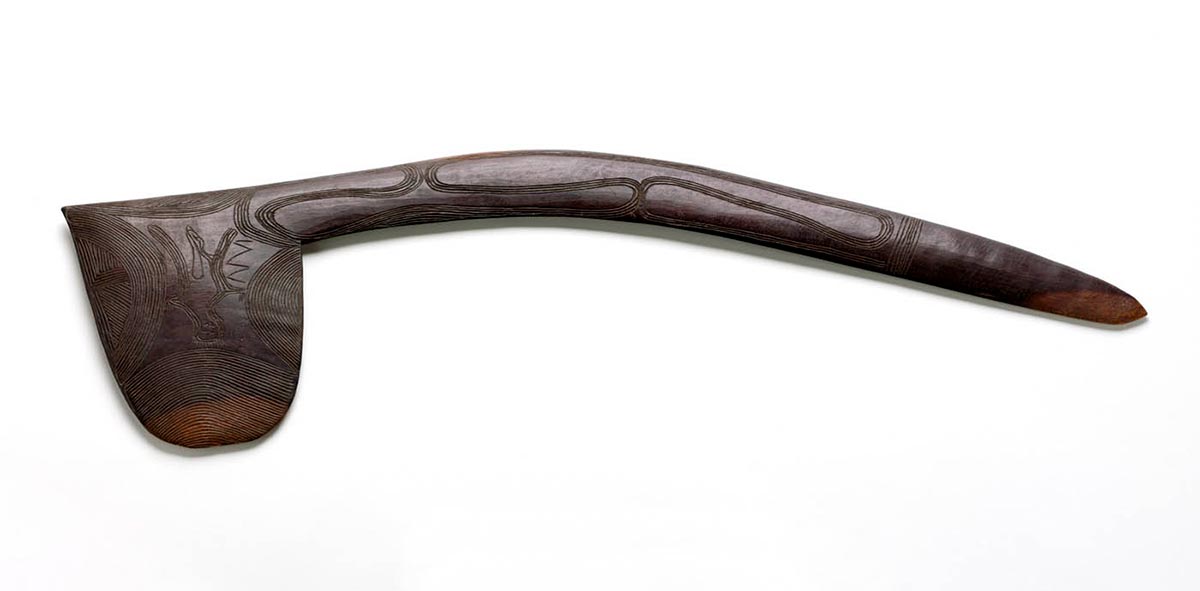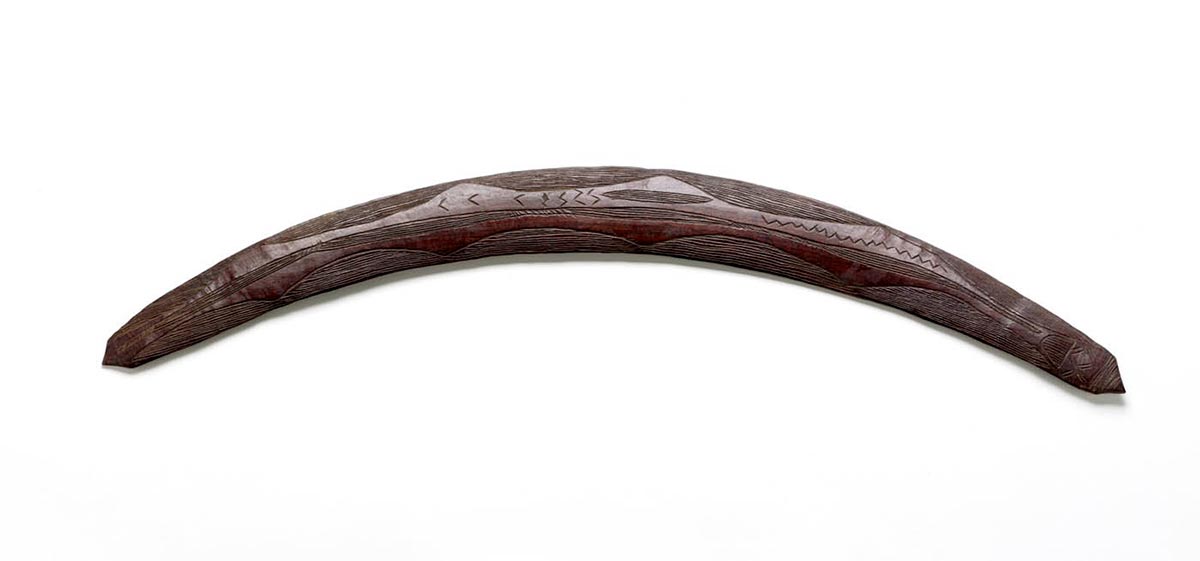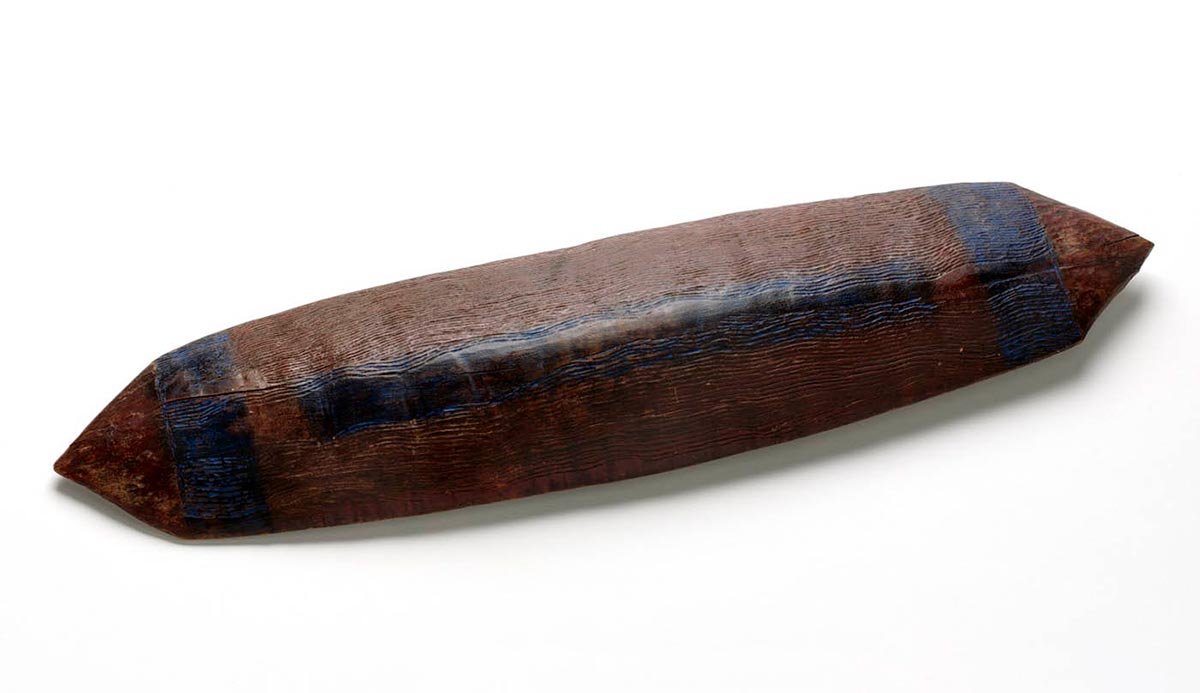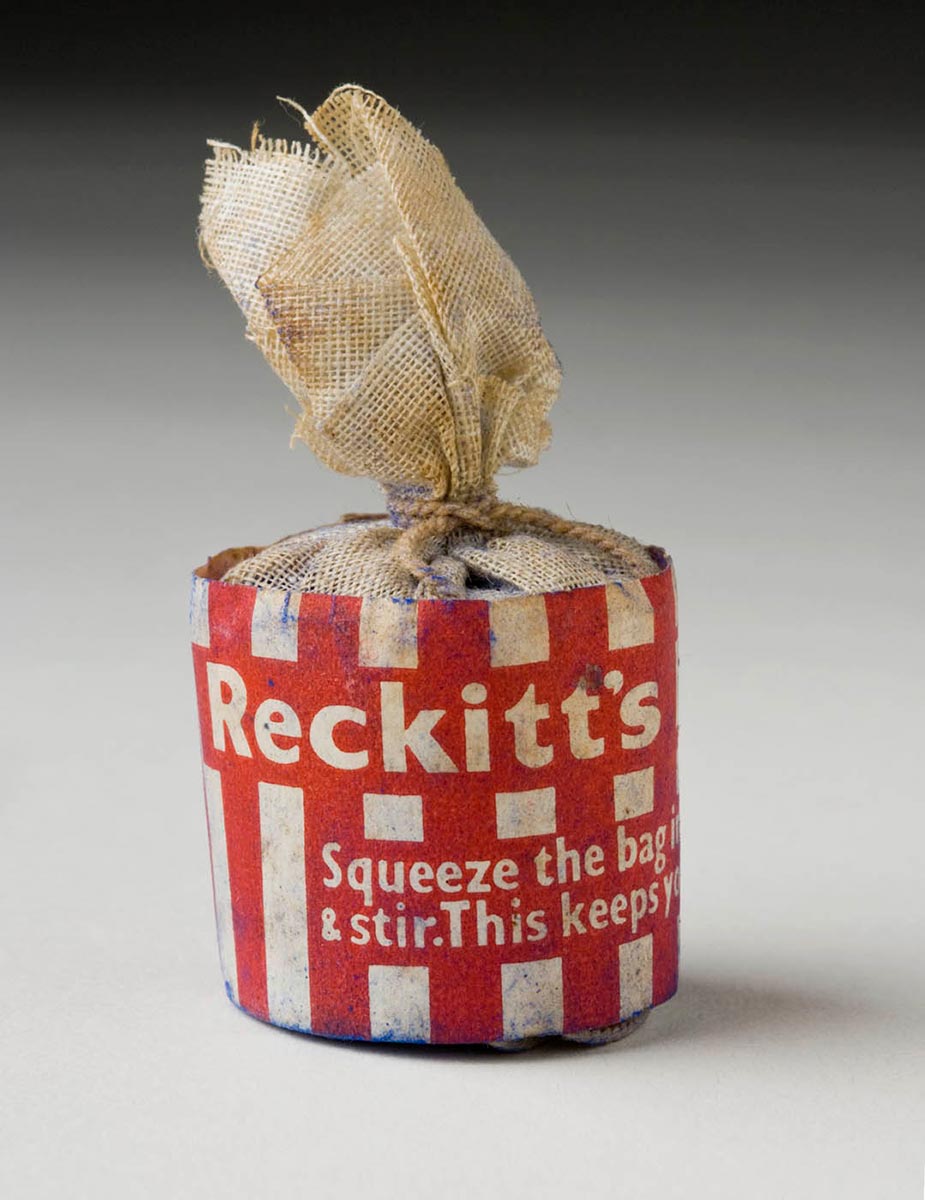A collection of seven Aboriginal artefacts from north-west New South Wales, dating to the late 19th century, extends the Museum's understanding of iconography and cross-cultural exchange.
Rare collection
This collection comprises three boomerangs, three clubs and a shield. They were collected by a soldier known as 'Bozza' before the Boer War (1899–1902) and found after his death at a house in Liverpool, New South Wales.
These objects are fine examples of their types. Their elaborate decoration and their excellent condition makes them a significant acquisition for the National Historical Collection.
Lil-lil
The lil-lil is a type of club which was made and used only in eastern Australia. It was a dangerous weapon when used in battle.
The design on the lil-lil club contains meandering loops divided into three sections. It is typical of a motif used by Aboriginal people in northern New South Wales and southeastern Queensland.
Mapping country
There are parallels between this lil-lil and an example held in the Melbourne Museum. The linear design on the Melbourne Museum club item was said by an early authority to represent 'a lagoon and probably an anabranch of the Broken River and the space enclosed by the lines shows the country which the tribe of the owner of the weapon occupied'.
It is possible that there is also a spatial element to the meaning of the design on the Museum's lil-lil.
Boomerang
One of the boomerangs in this collection features an incised, scallop design. This motif is particular to southern Queensland, northern New South Wales and northeastern South Australia.
Shield
The shield in this collection is a parrying shield from south-east Australia, probably from the Upper Darling and Paroo River region. It is decorated with horizontal bands of blue pigment at each end of the shield and a similar strip along its centre. This blue pigment is most likely 'Reckitt's Blue'.
Reckitt's Blue
Reckitt's Blue was a domestic bleaching agent, originally manufactured by Reckitt & Sons in England from 1840. It was in common use throughout Australia – including in frontier locations – from the mid-19th century. The Museum holds a number of Indigenous artefacts which have been decorated with Reckitt's Blue.
The use of a blue pigment on this shield can be interpreted as an example of Aboriginal people adapting available European commodities in the making and decorating of traditional artefact forms.
In our collection



